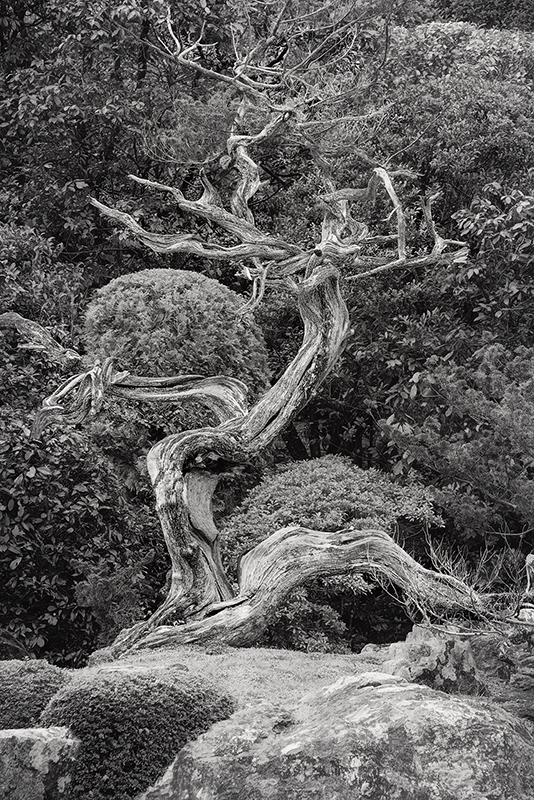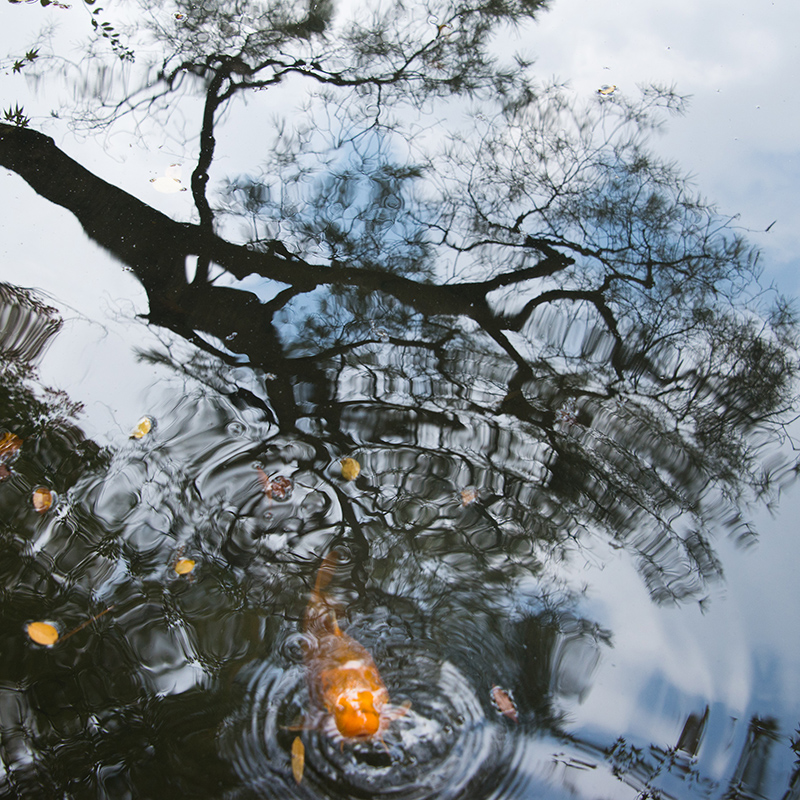I spent the day wandering through and photographing some of Kyoto’s many gardens and temples with my camera. Mostly in the vast Nanzen-ji temple complex. I also walked the so-called Philosopher’s path (named after the twentieth century philosopher Kitaro), and visited Ginkaku-ji temple (sometimes called the Silver temple). One of the temple complexes I was most impressed with visually was Zenin-ji, which is a series of pavilions and pagodas built up the side of one of Kyoto’s steep mountain ravines. This is something out of a fairy tale, or maybe the Lord of the Rings.

I am trying to come to grips with how this society can be so sincerely religious, yet at the same time so secular. The vast majority of Japanese would describe themselves as Buddhist and Shinto. Kenzo explained to me that Shinto takes care of earthly things—children’s rites of aging, having prosperity—while Buddhism takes care of death and spiritual matters, with this blending sometimes called “syncretic.” There is a logical disconnect between the beliefs of Buddhism and Shintoism, but many people believe in both, and Shinto shrines and purification rituals coexist quite happily with Buddhist temples.

At the same time, this is an incredibly secular society, where an amazing array of things are for sale in vending machines, and all taxi drivers wear jackets, ties and white gloves.
Shintoism is very straightforward in its ancestor worship, animism and openness at the temples about “being a business.” The logic is the same that I’ve heard in Western cults—if you want to be prosperous in your business, then you should make an offering to a faith that is also about prosperity. The animistic roots and totemic animal—the fox—of Shintoism come from early concerns with prosperity, where the fox ate the rat that ate the rice. The fox meant less rats and more rice to eat. This a faith that harks back to our early roots, and appeals to the part of each of us that identifies with the animal kingdom.

I find myself less reconciled to the march of admission fees to all the Buddhist temples, however. Once you get into a given famous temple, having paid one admission fee, you are all to often hit up for another (substantial) fee to see this famous Shoji screen, or that famous inner garden.
A photography student of mine whose day job was as an ecumenical lawyer once noted to me that “all religions are businesses.” I suppose it does take money to keep up the ancient structures and elegant gardens. But I wish the crass commercialism of some these temples weren’t hidden behind elegance—and I find the Shinto approach at least more straightforward.
Pingback: Monochromatic HDR Photography